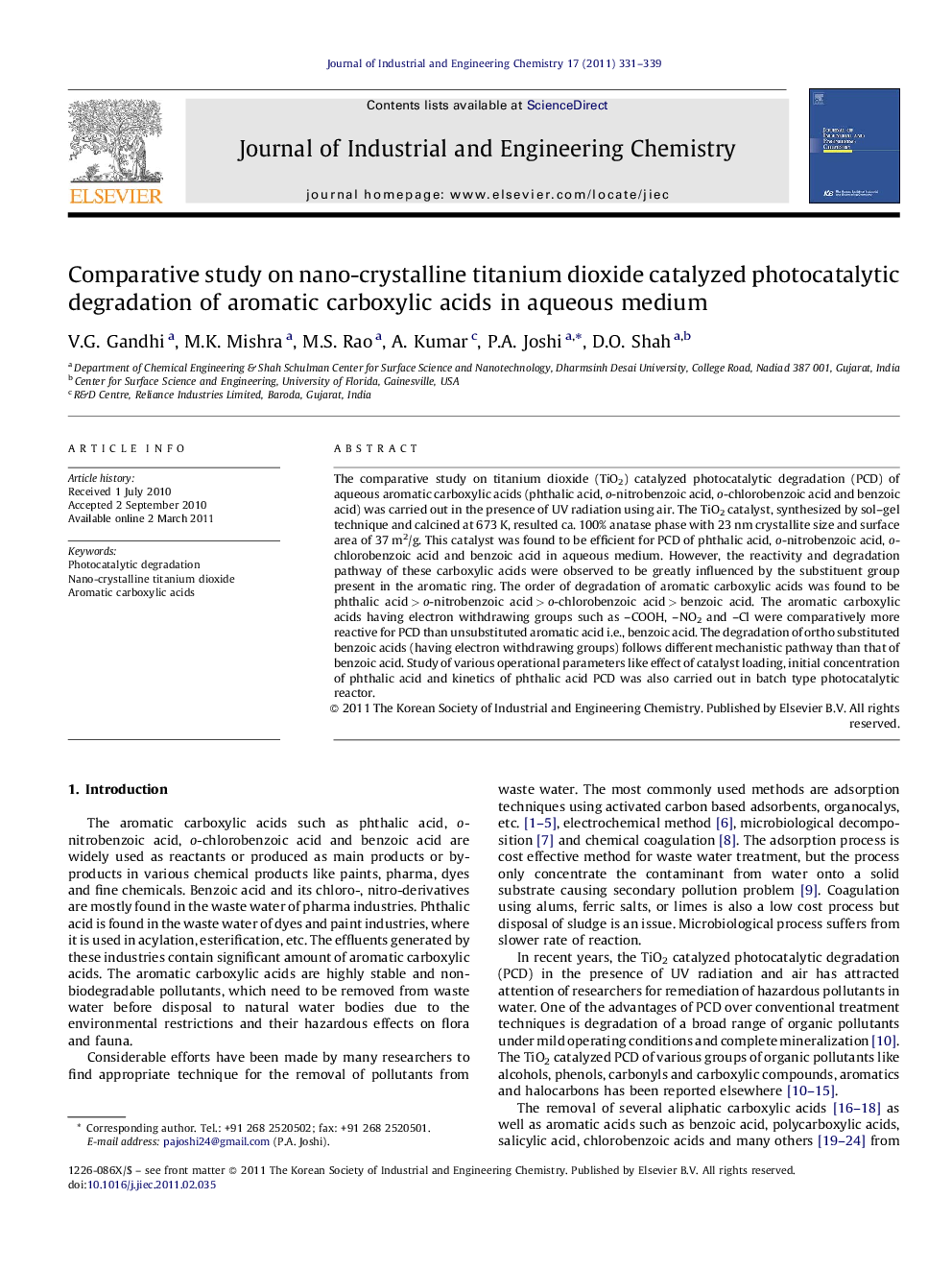| Article ID | Journal | Published Year | Pages | File Type |
|---|---|---|---|---|
| 228645 | Journal of Industrial and Engineering Chemistry | 2011 | 9 Pages |
The comparative study on titanium dioxide (TiO2) catalyzed photocatalytic degradation (PCD) of aqueous aromatic carboxylic acids (phthalic acid, o-nitrobenzoic acid, o-chlorobenzoic acid and benzoic acid) was carried out in the presence of UV radiation using air. The TiO2 catalyst, synthesized by sol–gel technique and calcined at 673 K, resulted ca. 100% anatase phase with 23 nm crystallite size and surface area of 37 m2/g. This catalyst was found to be efficient for PCD of phthalic acid, o-nitrobenzoic acid, o-chlorobenzoic acid and benzoic acid in aqueous medium. However, the reactivity and degradation pathway of these carboxylic acids were observed to be greatly influenced by the substituent group present in the aromatic ring. The order of degradation of aromatic carboxylic acids was found to be phthalic acid > o-nitrobenzoic acid > o-chlorobenzoic acid > benzoic acid. The aromatic carboxylic acids having electron withdrawing groups such as –COOH, –NO2 and –Cl were comparatively more reactive for PCD than unsubstituted aromatic acid i.e., benzoic acid. The degradation of ortho substituted benzoic acids (having electron withdrawing groups) follows different mechanistic pathway than that of benzoic acid. Study of various operational parameters like effect of catalyst loading, initial concentration of phthalic acid and kinetics of phthalic acid PCD was also carried out in batch type photocatalytic reactor.
